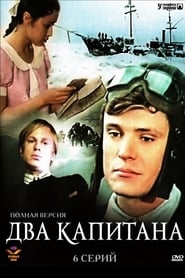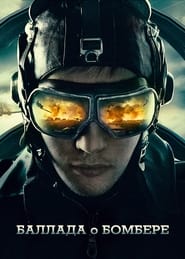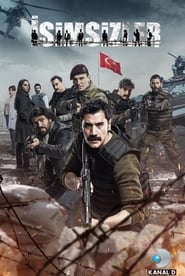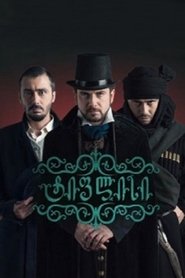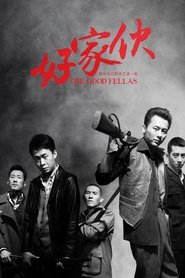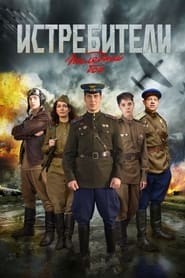Popular War Politics TV Series on Pantaflix - Page 31
-
Two Captains
1977
Two Captains
1977
star 6.3A passionate pilot dedicates his life to the search for a polar expedition. -
Ballad of a Bomber
2011
Ballad of a Bomber
2011
During the Second World War, a Soviet plane crashes in the territory occupied by the Germans, but the pilot Grivtsov and his beloved radio operator Katya, who were flying in it on a mission, miraculously escape. Navigator Linko also managed to survive. Each of them will now have to find their own way to complete a combat mission, return to their own and survive... -
İsimsizler
2017
İsimsizler
2017
star 7.3Fatih who is young and promising Turkish diplomat wait to start his new oversea duty. When terrorists killed district governor of Virankaya in Turkey, he change his mind and take the place of that governor. -
Wind of the Ryūkyū Islands
1993
The series tells The story of the 1609 invasion of Ryûkyû by forces from the Japanese domain of Satsuma, an event which changed the course of Ryukyuan history dramatically. -
New Heroic Legend
2011
New Heroic Legend
2011
This drama tells the story of a love and hate relationship between Yun Lei, who carries a deep ancestral hatred, and Zhang Dan Feng, having as background the war of the heroes who struggle for the hegemony of the Central Plains during the end of Yuan dynasty and the beginning of the Ming dynasty. (Source: Chinese = Baidu || Translation = MyDramaList) -
The White Horse
1993
The White Horse
1993
star 1The White Horse is a Russian TV serial broadcast in 1993. The film, in 10 episodes, was directed by Gelii Ryabov. It presents the Russian civil war in Siberia from 1917–1920 and the struggle of the White Russians under the command of Admiral Alexander Kolchak against the Bolshevik forces, until his final defeat. -
My War 3
2015
My War 3
2015
In 1944, the New Fourth Army won the Battle of Che Qiao, and the Japanese army then occupied the major transportation routes along the Yangtze River in an attempt to stop the growth and development of the New Fourth Army. The team learnt that the Japanese military was secretly working with Yokota Dojo and Toyo Corporation to develop Chaoyang City into an important intelligence station and supply base for the Japanese army. The division decided not to let the ennemy get away with it. In the ensuing battle, Nie Tian Ming leads a team to destroy the secret organisation of the Japanese Chamber of Commerce, intercept a large amount of valuable information and join forces with the Four Seas Martial Arts School to defeat Yokota Dojo. After a series of life-and-death battles of wits and bravery, he eventually matched up with a large force to annihilate the enemy and liberate Chaoyang City. (Source: Chinese = HKCinema || Translation = MyDramaList) -
Tiflis
2014
-
圣天门口
2011
圣天门口
2011
-
兄弟英雄
2011
兄弟英雄
2011
-
Soviet Storm: WW2 in the East
2010
star 8.2The epic television history of the Second World War’s Eastern Front giving an unprecedented Russian perspective on the war’s most decisive and bloody theater. -
По лезвию бритвы
2014
-
The Tree In Sunlight
2000
The Tree In Sunlight
2000
star 9A story set in the mid-1800's about a young doctor who has been trained in Western-style medicine and a young samurai who is trying to live up to the old traditions of his class and culture. The story is actually based upon real people - the doctor, Ryo-an, was Tezuka's great grandfather. The manga series was adapted to anime by Madhouse Studios and premiered in Japan on NTV on April 4, 2000. -
The White Guard
2012
The White Guard
2012
star 4.7The White Guard is a Russian television series, based on the novel by Bulgakov, The White Guard. -
The Good Fellas
2016
-
The Young Guard
2015
The Young Guard
2015
star 8.7A young partisan Viktor Tretyakov and his school friends decide to organize a resistance group to the fascists. They call it the "Young Guard" and attract familiar boys and girls to it. After a while, the Young Guards are joined by scouts sent to the city to collect information — Lyubov Shevtsova and the Artist. For a long time, the "Young Guard" manages to successfully commit sabotage, but they are opposed by an experienced and insidious enemy, who, in the end, manages to expose the Young Guards. -
血色黎明
2012
血色黎明
2012
-
Gallipoli
2015
Gallipoli
2015
star 6.6As dawn breaks on April 25, 1915, ANZAC troops go into battle on the beaches of the Gallipoli peninsula. Landing in the dark chaos, Tolly, Bevan and their mates struggle to establish a tenuous foothold on the treacherous slopes and deep ravines. They endure the next eight months on the peninsula learning lessons of survival. By the time of the final evacuation they have also learned the skills of combat and what it means to be a young man in war.
 Netflix
Netflix
 Amazon Prime Video
Amazon Prime Video
 Apple iTunes
Apple iTunes
 Apple TV Plus
Apple TV Plus
 Disney Plus
Disney Plus
 Google Play Movies
Google Play Movies
 Paramount Plus
Paramount Plus
 Hulu
Hulu
 HBO Max
HBO Max
 YouTube
YouTube
 fuboTV
fuboTV
 Peacock
Peacock
 Peacock Premium
Peacock Premium
 Amazon Video
Amazon Video
 The Roku Channel
The Roku Channel
 AMC+
AMC+
 Kocowa
Kocowa
 Hoopla
Hoopla
 The CW
The CW
 Vudu
Vudu
 Starz
Starz
 Showtime
Showtime
 PBS
PBS
 Pantaflix
Pantaflix
 FXNow
FXNow
 Tubi TV
Tubi TV
 Kanopy
Kanopy
 Comedy Central
Comedy Central
 Crunchyroll
Crunchyroll
 Microsoft Store
Microsoft Store
 Redbox
Redbox
 Sun Nxt
Sun Nxt
 ABC
ABC
 DIRECTV
DIRECTV
 Crackle
Crackle
 Fandor
Fandor
 Plex
Plex
